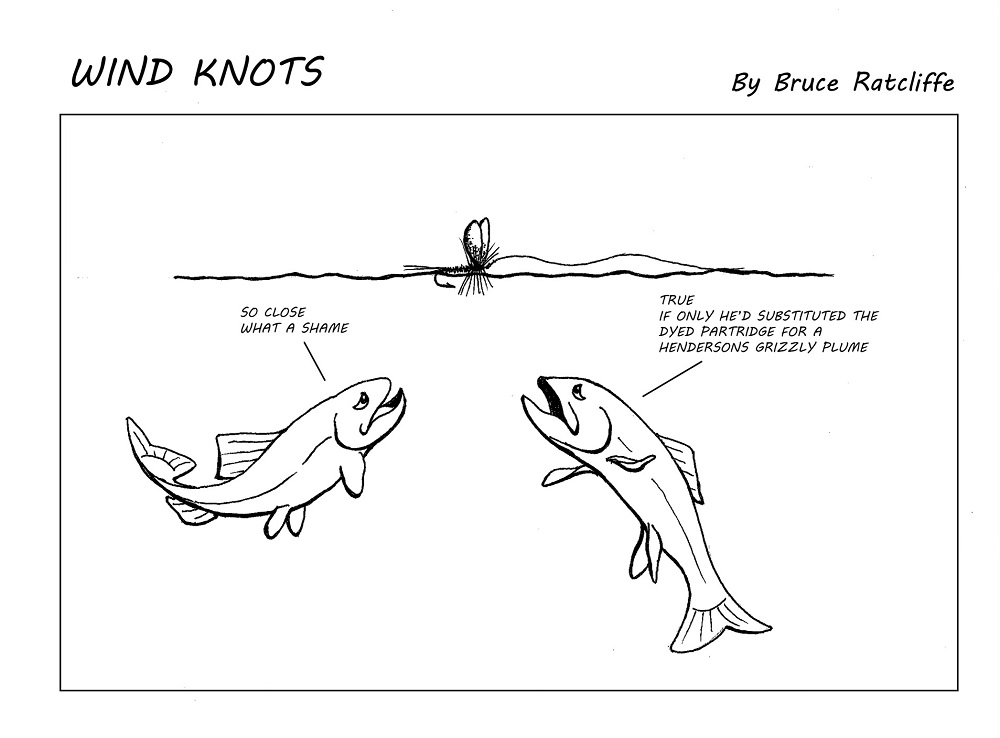
Following on from last issue, Philip continues his analysis of good fly choice.
Last time, we looked at how trout think (we think?), understanding outliers, and the key behaviours of opportunistic feeding and selective feeding. As you’re reaching into your box for a fly to tie on, this is all really important to understand. However, for better or worse, there’s some more information I’m obliged to pass on.
Selective anomalies
At the serious risk of confusing you, sometimes, trout feeding selectively will respond better to a fly that’s deliberately different to what the naturals look like. One quite logical example is when trout are smelting (selectively feeding on baitfish), and the sick or injured minnows are a different colour to their healthy comrades – in turn making them an obvious target. For these trout, I will often use a fly which is the same size and shape as the real minnows, but darker.
It‘s not so easy to explain when Lake Echo trout are feeding selectively on vast numbers of gum beetles, and an imitation twice as big as the naturals works better than a perfect copy. Or that afternoon when Lake Bellfield looked like it was covered in glitter, such was the quantity of termites, and yet a Claret Carrot easily out-fished a termite imitation.
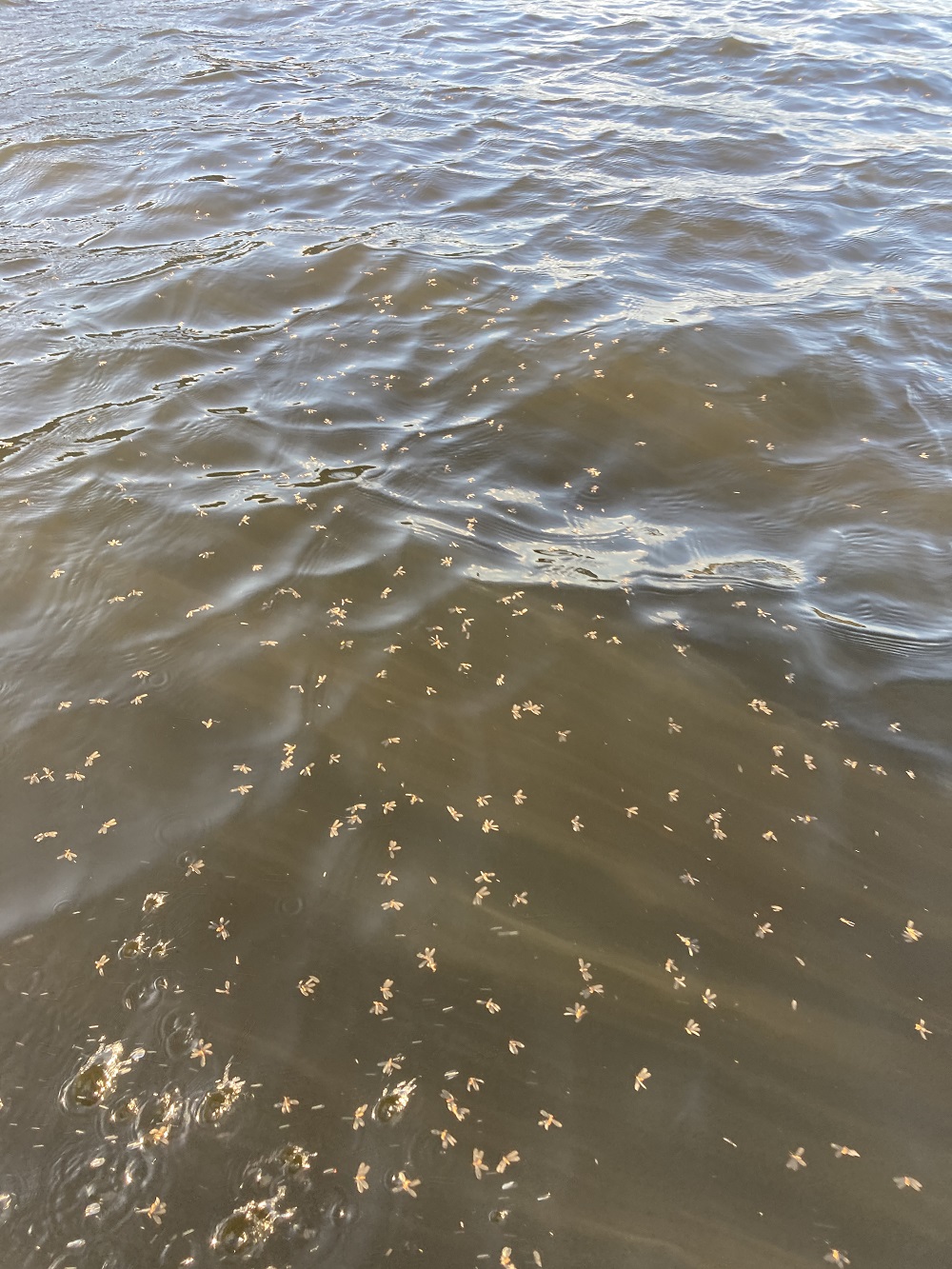
It’s great when this happens. Snowflake-in-a-blizzard syndrome can be quite overwhelming when fishing a nearly identical fly among hundreds, if not millions of naturals.
But I have to tell you, the gift of a very different fly genuinely working on selective trout, is rarely granted. I know, because I’ve tried it… many times. My understanding of the need to use imitative patterns on selective trout, is something which has been beaten into me over time, rather than a natural inclination. I’ve reluctantly learnt that, except for the occasional anomaly, the proverbial Woolly Bugger midge doesn’t really work; at least not on fertile western Victorian lakes; or at Lake Eucumbene.
Keep the faith
Whether the trout are being selective or opportunistic, once you choose a fly, don’t be too quick to give up on it. No fly is perfect, and one rejection does not make a failure. In fact, in conditions where the trout have a decent opportunity to examine a fly, a close inspection followed by a rejection should be anything but discouraging. Often, when my fly attracts that level of interest, I get an eat from the next trout, or even, with a slightly different presentation, an eat from the same trout which rejected the fly a cast or two earlier. The initial refusal or ignoring of a fly, could simply be down to, say, the trout being distracted by something else at exactly the wrong moment.
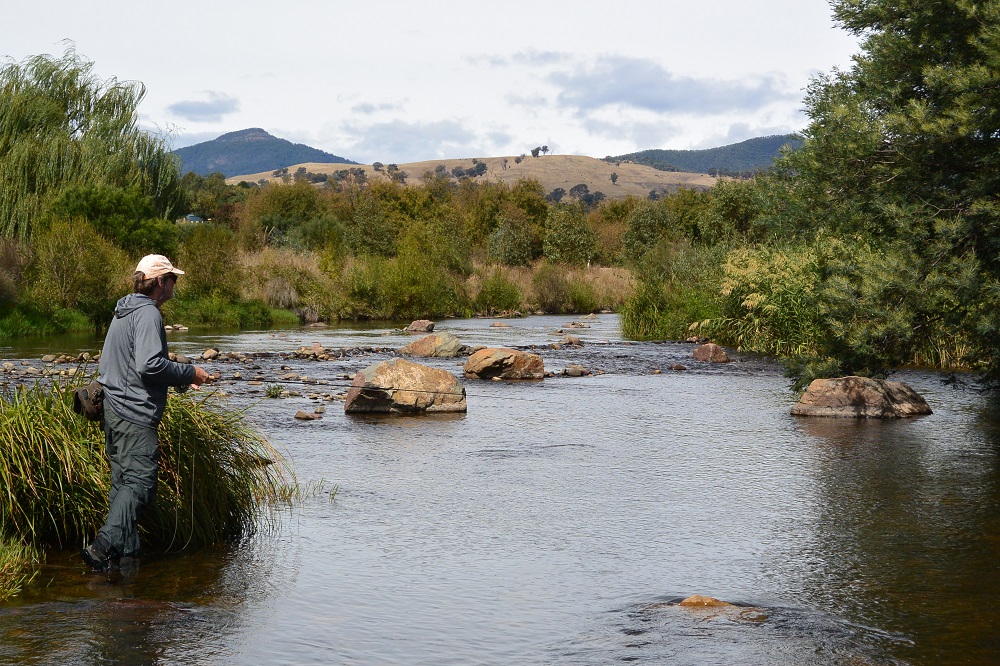
I was guiding last October, and my guest Annie was doing very well fishing a mayfly nymph pattern under a dry. There had been a good dun hatch earlier in the afternoon, and although it had faded to the occasional dun which had apparently slept through the alarm, the trout were still very happy to recognise a skinny size 14 brown nymph as food. Rises had almost ceased, so we were standing in the shadow of a banksia, watching a nice ‘window’ in the water, and hoping a trout would swim into view. Before long, I spotted one approaching from our left and many metres away. Perfect for an ambush!
Annie did a lovely cast well ahead of the fish, but in its likely path. The flies landed quietly, and yes! The big rainbow tracked straight towards them… and then straight past without missing a fin beat. “Oh bother!” muttered Annie (or words to that effect). She was about to recast when I yelled, “Wait!” As I followed the fading shape of the rainbow, it swum on a few metres, then it suddenly did a U-turn, as if it had forgotten something. The fish then swam straight up to the nymph and inhaled it. Who knows what had been wrong on the first pass, but evidently it wasn’t the fly.
To reinforce the point, it’s so important to fish a fly with faith. Try to back your judgement – you will fish a fly with more care, purpose and attention if you think a trout might eat it.
How you acquire that confidence in the first place is up to you, but recommendations from trusted books, magazines, videos, or successful fishing mates or guides, are all a good start.
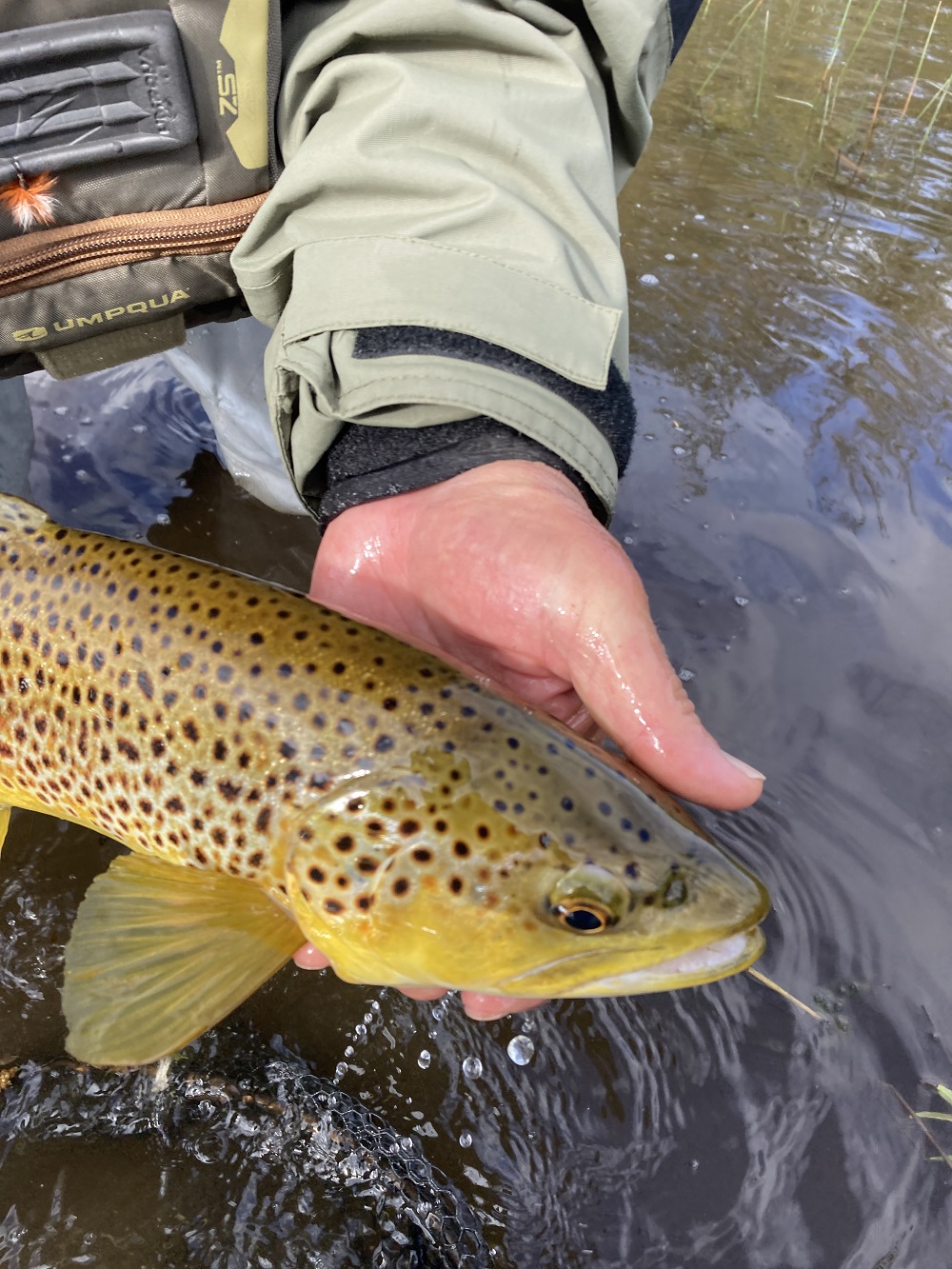
Good anglers will differ
Further to that last point, it must also be infuriating for inexperienced flyfishers to receive differing fly advice from equally well-credentialed experts; whether that be online, in books or magazines, or in person. Among my fishing friends and guide colleagues, if I asked them to nominate their favourite half dozen flies, after initial objections (as you gather more and more knowledge about most aspects of flyfishing, ‘favourite’ is a word that becomes harder and harder to use!), I’m pretty sure none of the lists would be exactly the same.
Rather than a reflection on differing abilities, the varied favourites are most likely another example of the power of belief in a fly.
We can invest plenty of good, sound logic into fly choice, but until the day comes when we can poll most trout across the globe, we can never be quite sure we know what they are thinking about flies. I’ve stressed before that trout are not little people in trout suits, and yet it can be very hard to resist the temptation to fish for them as if that’s exactly what they are.
When seeking good fly advice, I would add a couple of extra points. One is, be a bit wary of information coming out of some of the more famous and prolific northern hemisphere fisheries. I’m not sure if it’s the long winters compressing windows of ‘hatch’ opportunity, or the inherent fertility of some waters, but selective feeding and the need to pick the right fly, is definitely more of a thing there. (See Peter Hayes’ latest Hebgen Lake column.) I’ve fished some of these big-name streams and lakes, and there is certainly a trend for longer-lasting and more predictable hatches and falls. Perhaps my angry guest from part one of this article, had seen the hatch charts for streams like the Henrys Fork or De Puys Spring Creek, and wondered why I couldn’t oblige with the same!

But with a handful of exceptions, such as spring mayfly hatches on Central Victoria’s lakes, or the similar summer hatches in Tasmania’s Central Highlands, we simply don’t have that tidy predictability down under – and even then, the detail is frayed by seasonal variability.
On a similar note, I would also be wary of any fly advice that’s too precise and predictive. Sentences like, “You only need fly X on river Y in December”, should be regarded with caution. By all means add a few of the recommended flies to your collection, but don’t let your trip depend on them.
Some generalities
The longer I fish, the more I think we can be inclined to overdress trout flies. Anglers are often attracted to idea of a decent chunk of meat on the hook, so to speak; perhaps confusing what they would be drawn to if they were a trout. But to stress the point once again, we’re not trout. In the real world, a lot of a trout’s staple diet is quite small, slim; even skinny. For many trout flies, sparse is good, and drab shouldn’t be underestimated either. I’ve written before of the difficulty some of my guided guests (especially the less experienced) have hiding their disappointment when I tie a stick caddis to their tippet. A less impressive-looking pattern you would struggle to find, yet it probably catches me or my guests as many decent stillwater trout as any fly I have in my box.

And on the topic of what trout want (as opposed to what anglers like) have faith in the ability of trout to find flies they like in poor light or discoloured water. A few years ago, I was guiding at Millbrook and headed to a lake I hadn’t fished for a week in the hope of an evening midge hatch. But I hadn’t allowed for the effect of a localised thunderstorm, and we found the lake badly discoloured, with less than a foot of visibility – at least to human eyes. With no time left for a plan B, I put on a brave face and set my guest Wayne up with a big black Yeti, in the hope he’d be able to stir up a trout in all the murk. If nothing else, I reasoned, any trout which had the fly pass close enough would no doubt swipe at it.
Well, the plan failed. The sun had set without any sign of a fish, and we were about to pack up and leave, when I saw the first rise, then another. I immediately thought that, in the discoloured water, coupled with low light, this would be one time when a big wet would work on midge feeders. But although Wayne made a number of decent presentations which must have swum the Yeti right past the trout, no response.
Racing the fading light, I rerigged Wayne with a combo of a Carrot with a size 16 red buzzer 50cm behind – the same flies I had succeeded with a week earlier when the lake had been clear. First cast, Wayne was right on target, and he drew the flies half a metre ahead of the silhouetted dorsal and tail of good fish. An instant later, he hooked up on the buzzer, and after several minutes of chaos, a 6lb brown was in the net.
By the time I snapped a pic and cleared the flies of slime and algae, it was virtually dark. However, by positioning ourselves so the reflected afterglow of the long-gone sun lit a strip of water, we could see there were still trout rising. Wayne’s first cast was unsuccessful, but the second was evidently on target, because he was soon into another ripper, this time a 7 pounder: again on the tiny buzzer.
These days, I’m still tempted to default to big and bulky flies if the water is murky or the light has gone. However, I have more and more faith in the extraordinary capacity of a trout’s senses. In situations where I imagine trout might struggle to locate my offering, I err towards less bulk and bling than I used to. This is an incremental thing and it’s difficult to be too prescriptive. However, I would go as far as to say, start with a fly you would use if the water wasn’t discoloured, or the light wasn’t gone, and then go progressively bulkier or flashier if necessary.
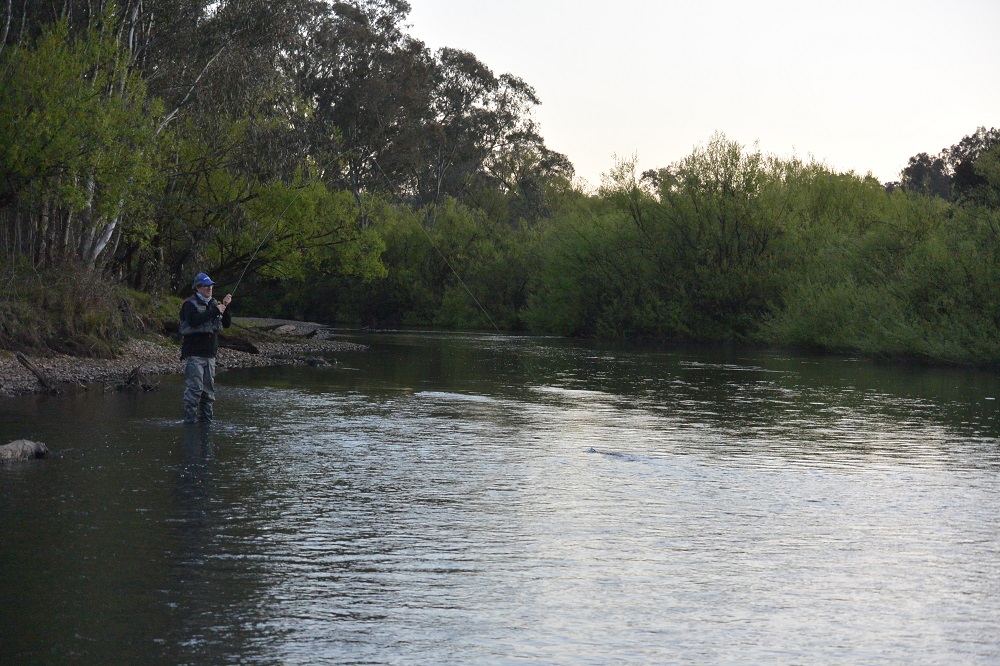
Accept the uncertainty
There’s an argument for trying to make flyfishing simpler than it really is. I hear all the time that people can get put off by too much complexity all at once, and where possible, I try to take it one basic step at a time. But to come full circle back to my unhappy guest at the start of part one, there’s also a problem with saying something is simple, when in fact it is not.
It’s taken me two articles to get to the point where I feel I’m not being deceptively simple about fly choice… hopefully without overcomplicating it either. Ultimately though, fly choice doesn’t lend itself very well to neat charts and tables. I hope these articles help the process make more sense, but they aren’t a checklist for every eventuality. And perhaps that remaining element of uncertainty is part of flyfishing’s charm.
